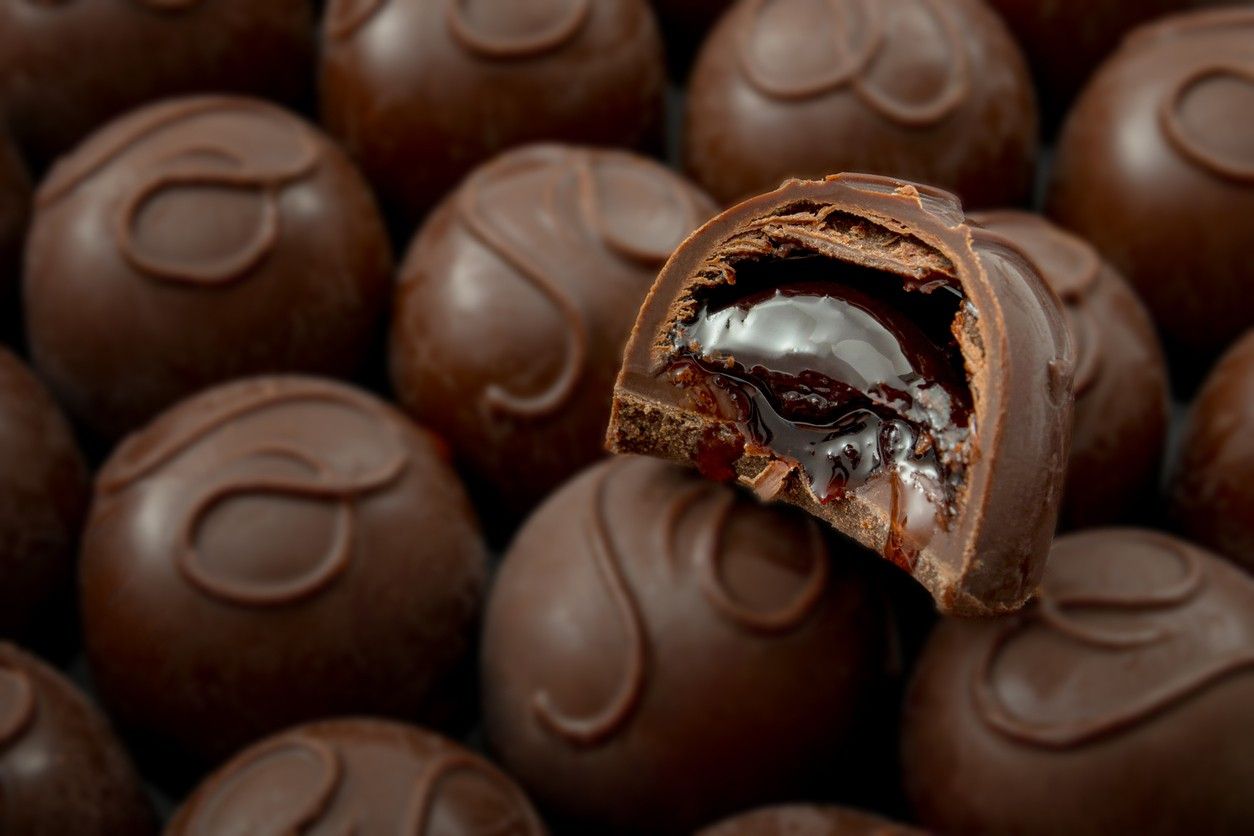The chocolate and confectionery category continues to demonstrate remarkable resilience in today's challenging economic climate, offering independent retailers a dependable revenue stream when consumers are tightening their belts elsewhere. As shoppers seek affordable treats to brighten their day, this category has maintained its value proposition, with chocolate and candies serving as accessible luxuries that provide comfort without breaking the bank.
This trend is particularly evident in the burgeoning “sweet treat economy” driven by Britain's return-to-office culture. New data from Virgin Media O2 Business reveals that office workers are now spending an estimated £57 million a week on chocolates, creating significant opportunities for convenience retailers positioned near business districts. More than half (54 per cent) of workers are more likely to purchase sweet treats and snacks when in the office compared to working from home, with 52 per cent treating themselves as a reward for going into the office.

The workplace has become a crucial driver of confectionery sales, with 40 per cent of office workers consuming sweets and chocolates most days they work in the office. Popular choices include Cadbury Dairy Milk (21 per cent), KitKat (15 per cent), Cadbury Twirl (10 per cent), Kinder Bueno (10 per cent), and Galaxy (nine per cent). For many workers, these purchases serve multiple purposes: 38 per cent say treats help boost their energy, 37 per cent use them to improve their mood, and 34 per cent see them as an opportunity to take a break from work.
Jessica O'Connor, Product Director at Virgin Media O2 Business, explains the broader economic impact: “Small treats are becoming an essential part of office culture, helping employees take a quick break and to return feeling energised. This trend isn't just good for morale, it's making a real impact on the wider economy, driving spending in local shops, cafés, and physical retail stores.”
Premium opportunity
The numbers tell a compelling story beyond workplace consumption. In the last year the chocolate category has grown in revenue by 1.4 per cent, while premium chocolate has grown by 22.4 per cent in the independent channel [Nielsen], “proving that during tough economic times consumers are willing to pay that bit extra for 'little treats',” according to Lydia Stubbins, Group Marketing Director at Divine Chocolate Ltd.
This trend towards premiumisation has only intensified recently, with premium chocolate experiencing extraordinary growth of 68.6 per cent in value and 69.1 per cent in units in the latest 12-week period compared to the previous twelve weeks.
For independent retailers, this shift towards premium offerings presents a golden opportunity. The key lies in stocking brands that combine quality with ethical credentials. “Divine Chocolate is a must stock brand,” explains Stubbins. “The brand is the highest scoring food and drink B-Corp in the country, uses only Fairtrade ingredients and is the only chocolate company to be co-owned by cocoa farmers, meaning the delicious taste of the chocolate is backed up by strong ethics.”
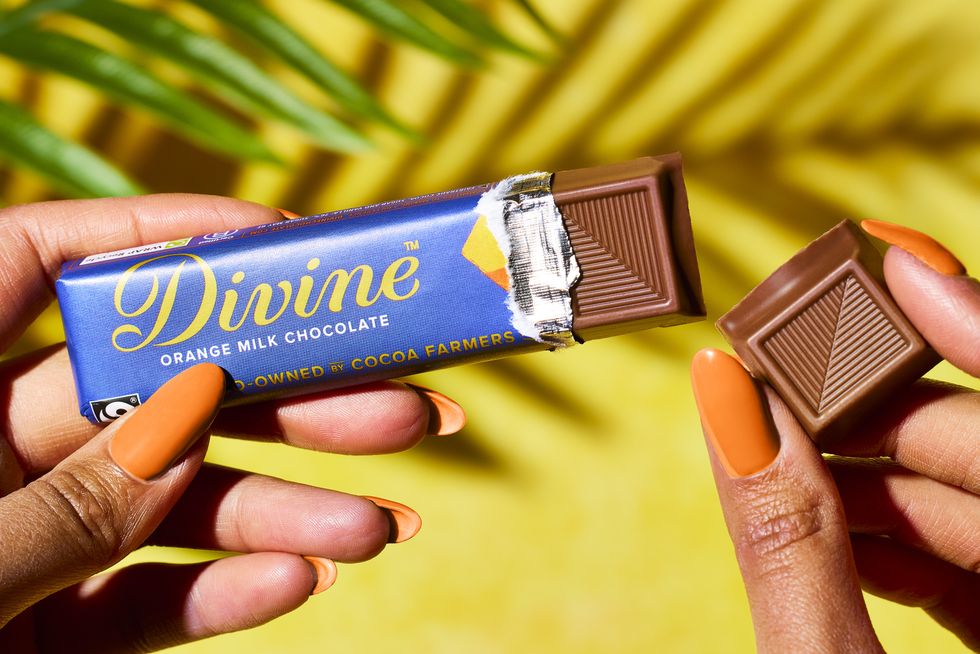
The sugar confectionery segment is equally buoyant, with particularly exciting developments in specific niches. Susan Nash, Trade Communications Manager at Mondelēz International, highlights that “the market is in growth and currently represents 24 per cent of the total confectionery market.” Within this expanding sector, sour candy is emerging as a standout performer, appealing to consumers seeking “little moments of fun and escapism from day-to-day life.” The success of products like Sour Patch Kids, which is “growing by 67 per cent,” demonstrates how retailers can tap into this demand for distinctive flavour experiences.
The broader market dynamics are equally encouraging. Mark Roberts, Marketing & Trade Marketing Director at Perfetti Van Melle, reports that his company “is valued at £131.6m as of January 2025, growing at 3.6 per cent vs January 2024, and well ahead of the market which sees a 0.9 per cent value decline vs this time last year.” This outperformance in a challenging market underscores the importance of having the right portfolio mix, with household brands like Mentos, Fruit-tella, Chupa Chups, and Smint collectively worth over £100 million.
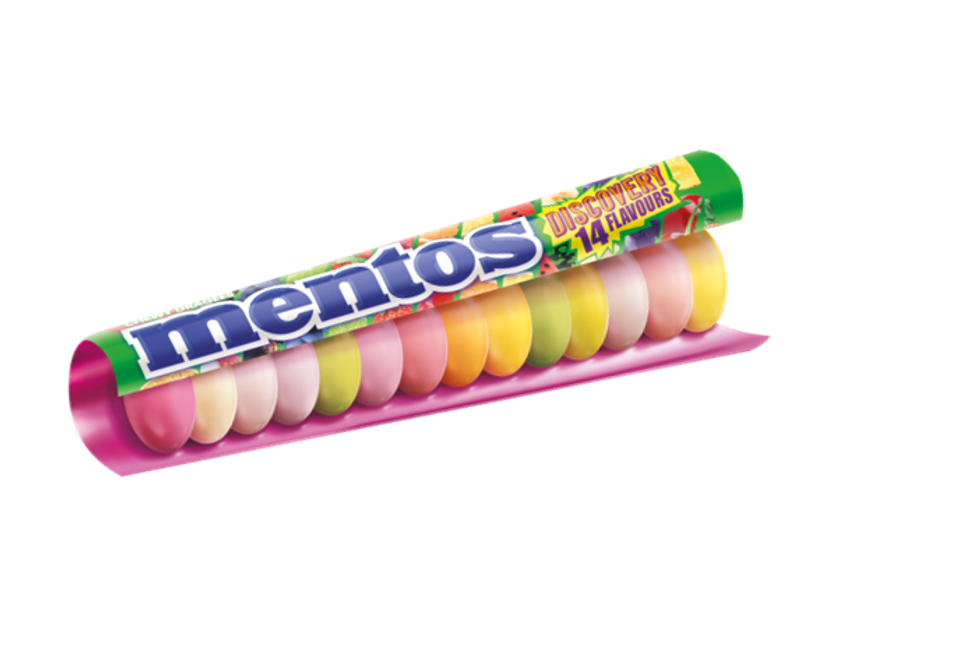
The resilience of the category extends beyond mere survival tactics. Roberts emphasises that “sugar confectionery is a resilient category as it delivers lifts and treats for its consumers. As we continue into a challenging economic landscape, confectionery remains an affordable treat giving retailers a compelling sales generator.” This affordability factor is crucial, as it positions confectionery as a guilt-free indulgence even when household budgets are stretched.
The treating trend shows no signs of slowing down. Declan Hassett, Licensing Manager at Diageo, points to research revealing that , “despite the uncertain economic climate, consumers are continuing to spend on affordable luxuries, showing a willingness to treat themselves to small, accessible items.” The global treat category is expected to reach $479 billion by 2027, with a compound annual growth rate of 4.4 per cent, indicating sustained long-term growth potential.
Compliance risks
Meanwhile, the explosive popularity of Dubai-style chocolate across the UK retail has brought unexpected regulatory challenges to the fore, with the Food Standards Agency (FSA) issuing serious warnings about imported products that could pose significant risks to both consumers and retailers. As convenience stores rush to capitalise on viral confectionery trends, the latest FSA alerts serve as a stark reminder of the importance of rigorous supply chain compliance.
The Dubai chocolate phenomenon has been nothing short of remarkable. Since first taking social media by storm, the pistachio- and Knafeh-filled bars have prompted major retailers to develop their own versions. However, this surge in demand has created a troubling parallel market of unauthorised imports.
On 12 June, the FSA issued a comprehensive warning about imported Dubai-style chocolate products that “may not be intended for sale in the UK and could lack a full ingredients list or allergen labelling.” The agency's investigation revealed products containing additives and colours prohibited in the UK market, alongside inadequate allergen information that could prove dangerous for consumers with food allergies.
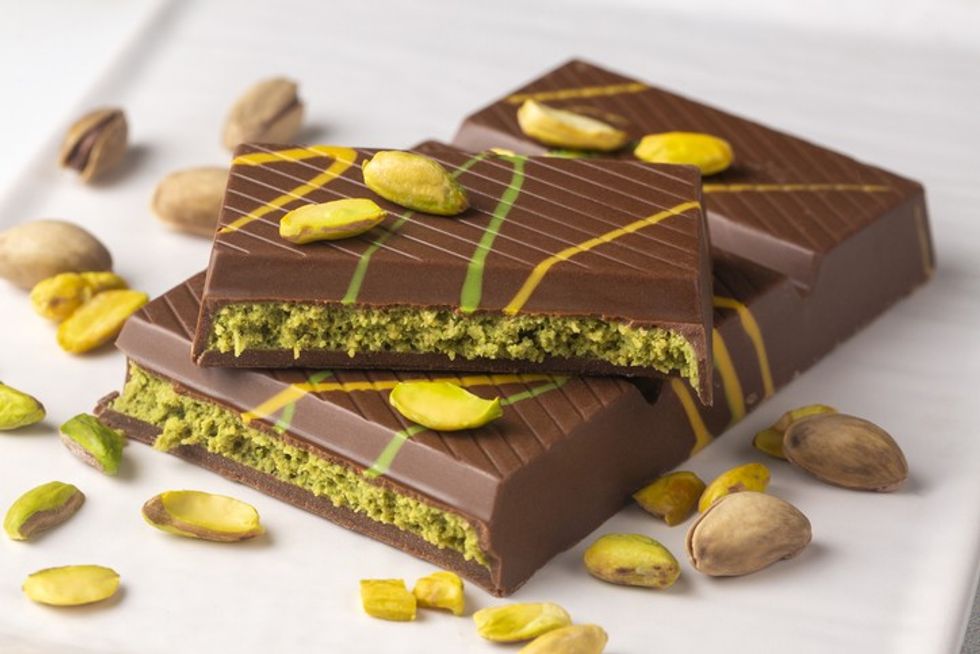
“The vast majority of food in the UK is safe, but some imported Dubai-style chocolate products don't meet our standards and could be a food safety risk, especially for consumers with allergies,” Professor Robin May, Chief Scientific Advisor to the FSA said, advising consumers looking to buy Dubai-style chocolate to “stick with trusted retailers, like the ones you'd use for your weekly shop, as products are more likely to be made for UK consumers and so are safe to eat.”
The warnings extend beyond Dubai chocolate. A day earlier, the FSA instructed retailers across England, Wales, and Northern Ireland to immediately halt sales of several Jolly Rancher products manufactured by The Hershey Company. These popular American sweets were found to contain mineral oil aromatic hydrocarbons and mineral oil saturated hydrocarbons – substances not permitted in UK food products. The FSA noted that while “the immediate food safety risk to consumers is considered low, regular or high-level consumption of these substances may pose serious health risks, including potential DNA damage and increased cancer risk.”
The Jolly Rancher recall affects all pack sizes, batches, and best-before dates of Hard Candy, “Misfits” Gummies, Hard Candy Fruity 2 in 1, and Berry Gummies variants. Despite The Hershey Company proactively stopping UK supply in 2024, unauthorised imports through third-party distributors have continued, highlighting the challenges retailers face in managing grey market products.
The rise of BNI
While these incidents underscore the critical importance of working with authorised distributors and maintaining robust supplier verification processes, they also point to a significant shift in confectionery landscape, with new consumption patterns emerging that savvy retailers can capitalise on to drive both footfall and basket value.
One of the most significant trends shaping the category is the growing popularity of home entertainment. Nash observes that “shoppers are increasingly looking to enjoy evenings at home as a more cost-effective way to spend time with family and loved ones.” This shift towards domestic socialising has bolstered the Big Night In occasion, presenting retailers with substantial opportunities.
“This subsequent increase in the Big Night In occasion can be catered to with our gifting and sharing formats and the evening occasion is the key time of day for sharing, with bags being the most convenient and popular format for the consumer,” Nash explains. The trend reflects consumers' desire to maintain social connections whilst managing household budgets more carefully, with staying in representing a cost-effective alternative to expensive nights out.
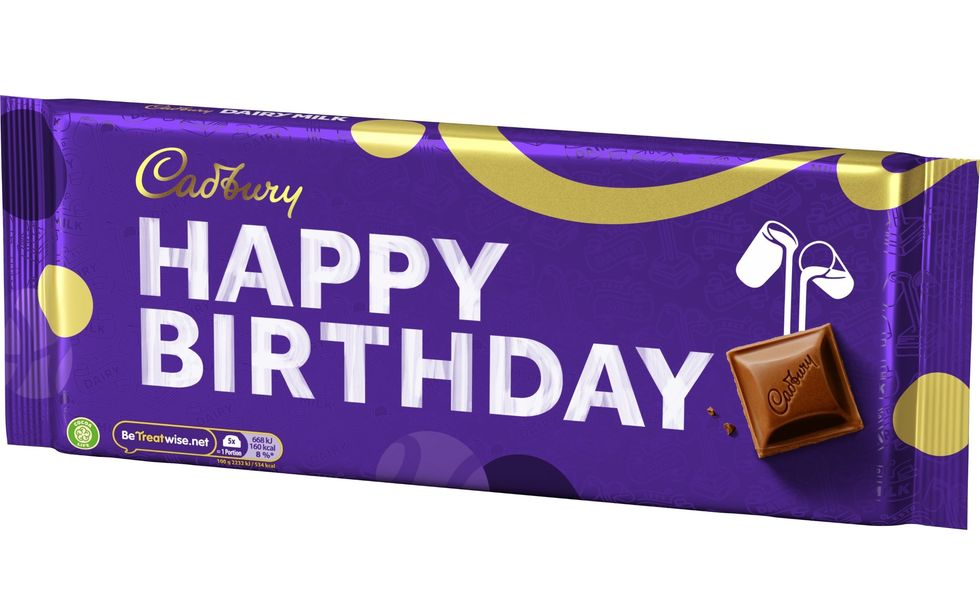
This behavioural change has tangible implications for product selection and merchandising. Cost-of-living pressures have driven consumers to “eat in” more, creating opportunities for convenience retailers to position themselves as destinations for “meal for tonight” and BNI offers. The key lies in understanding that sharing formats and bag products are particularly well-suited to these occasions, as they facilitate group consumption and offer better value perception.
Despite economic headwinds, brand loyalty in confectionery continues to outperform many other categories. Nash notes that “brands continue to stand out in confectionery, relative to other categories, with brand growth in gifting and sharing stronger than own label.” This trend is particularly pronounced in the gifting and sharing segment, where brands are outstripping the own label competition with 11.2 percent total category growth [Nielsen]
This brand strength reflects consumers' desire for trusted quality when treating themselves or others. “Despite economic uncertainties putting pressure on household budgets, consumers are still looking for treats from trusted brands so the confectionery category is more important than ever,” Nash emphasises.
Value without compromise
The relationship between price and value has become increasingly nuanced. While consumers are price-conscious, they're not necessarily seeking the cheapest options. Nash clarifies that “consumers are focused on value not price,” highlighting the importance of perceived worth rather than simply low prices.
Price-marked packs have gained particular traction in this environment. “Price marked packs help deliver a value message in-store, tapping into consumers' need for 'affordable' treats, so they're an important part of a convenience retailer's range,” Nash explains. However, she notes that “there is still a demand for premium products, and we see consumers not wanting to hold back on seasonal treats, in particular.”
The confectionery category is adapting to health trends without sacrificing indulgence. Roberts notes that “health concerns still remain a priority for all,” but crucially, consumers are seeking choice rather than elimination. “Our sugar-free alternatives allow people to make their own choices,” he explains, with Perfetti Van Melle remaining “the leader within the Sugar Free category, with sales continuing to grow.”
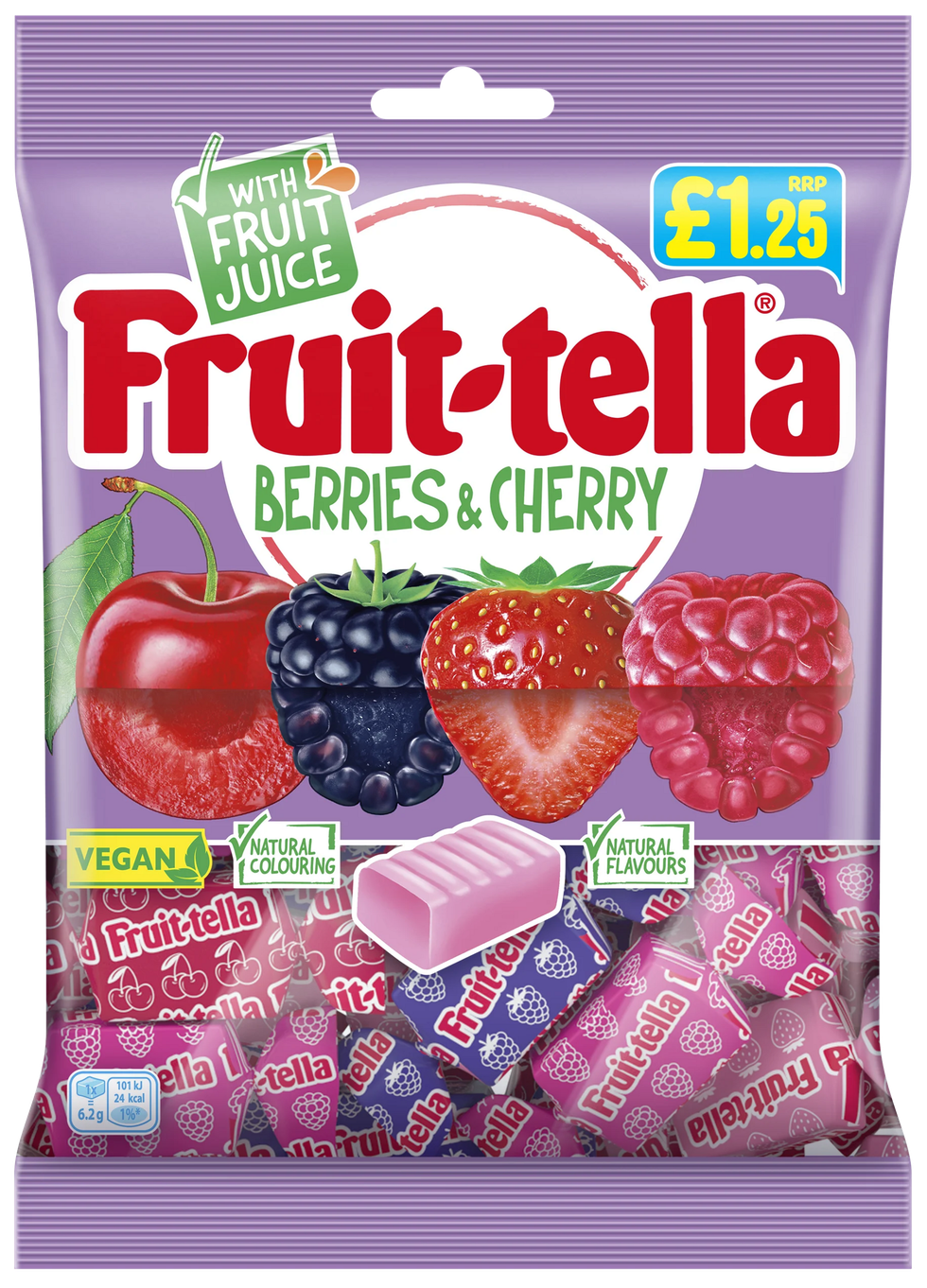
The regulatory environment is also shaping product development, with Roberts highlighting that offering “a full range that supports the governments HFSS guidelines of under 150kcal per pack – something most manufacturers can't, gives Perfetti the opportunity to be closer to these impulse purchases.”
Plant-based alternatives represent another significant growth area. Roberts announces that “family favourite and top ten candy brand, Fruit-tella's best-selling chews have transitioned to a fully vegan recipe, meaning that the brand can now deliver fruity joy to an even bigger audience of consumers.”
The switch to vegan will be implemented across the full range of chews including the Fruit-tella favourite Simply Strawberry Chews, and the more recent edition of Fruit-tella Berries & Cherries. This transition maintains quality whilst expanding market reach, as “the delectable chews will still contain real fruit juice and be made with all-natural colourings and flavours.”
Dark chocolate revolution
A particularly noteworthy trend is the growing consumer preference for dark chocolate, driven by health consciousness and perceived wellness benefits. Stubbins, from Divine Chocolate, reveals that “consumer preference towards dark chocolate is growing,” with value sales for dark chocolate up 22 per cent year on year [Nielsen].
This shift appears to be driven by health considerations, with Stubbins suggesting that “shoppers are switching into dark chocolate as they recognise it is less processed, and contains less sugar, and therefore, believe it to be better for them.” For retailers, this presents an opportunity to expand dark chocolate ranges and educate consumers about premium options that combine health benefits with exceptional taste credentials.
“Divine Chocolate is a specialist in dark chocolate with options at both 70 per cent and 85 per cent, so the range is a great place to start for retailers looking to capitalise on this trend,” Stubbins adds. “For those worrying that dark chocolate doesn’t taste as good, Divine has won a coveted eight Great Taste Awards, proving that dark chocolate – when crafted using the finest cocoa and pure cocoa butter, with no nasty fillers – really is the cream of the crop.”
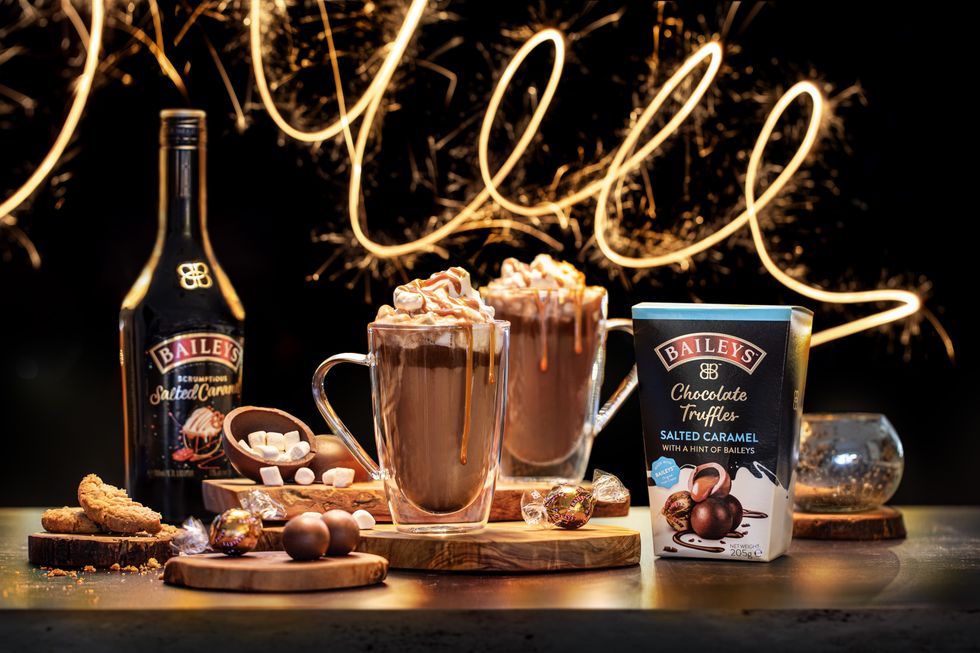
Perhaps one of the most innovative trends is the growth of licensed confectionery products that leverage established brand equities from other categories. Diageo’s Hassett highlights that “licensed products from highly salient and well-loved household brands help to have influence outside of traditional categories and when optimally merchandised are best placed to succeed.”
The success of Baileys-licensed confectionery exemplifies this trend. “Baileys licensed products are hugely popular with adult consumers, with more than four million licensed products sold in the UK last year, equating to one product sold every eight seconds,” Hassett reveals. Remarkably, “over 20 per cent of Baileys shoppers do not purchase the spirit itself, instead only purchasing the brand's licensed products on offer,” demonstrating how licensing can access entirely new consumer segments.
This approach addresses a crucial retail challenge: “we know that 80 per cent of consumers don't regularly visit the BWS aisle which can leave a huge gap in potential sales.” Licensed products allow retailers to capture this missed opportunity by bringing familiar brand experiences into high-traffic confectionery areas.
On-the-go solutions
The confectionery category's resilience is underpinned by continuous innovation and strategic product development that meets evolving consumer needs. Leading manufacturers are demonstrating how thoughtful product design, combined with compelling marketing campaigns, can drive incremental sales and enhance the convenience retail experience.
Understanding the convenience shopper's mindset is crucial for product success. As Stubbins observes, “products that can be consumed on the go work well in convenience as usually shoppers will be on the move when purchasing and consuming them.” This insight has informed Divine's approach to packaging and product sizing, with their 35g bars arriving in “shelf-ready packaging that also looks premium, ensuring that the bars are easy for independents to get straight onto shelf with minimal fuss, but also, they stand out, attracting the eye of consumers.”
The Divine 35g range exemplifies how premium positioning can coexist with convenience functionality. “The Divine 35g bar range also comes in a diverse range of flavours which is a unique proposition for bars of that size,” Stubbins explains. This includes innovative offerings like their cappuccino bar, “which is a mix of milk and white chocolate, with a delicious coffee flavour coming from the addition of a sprinkling of Fairtrade coffee beans.”
Such distinctive flavour profiles help retailers differentiate their offerings whilst potentially increasing basket spend, as Stubbins notes that “stocking Divine's range of 35g bars can be helpful in growing incremental basket spend.”
The power of impulse
With impulse purchasing behaviour driving significant sales opportunities, Kathryn Hague, Head of Marketing at confectionery distributor World of Sweets, says understanding which products work best and how to merchandise them effectively can make all the difference to bottom-line performance.
“Impulse buy confectionery products work best in convenience because customers often make spontaneous purchases when they see appealing displays in store,” explains Hague. “These products are typically small, affordable and visually attractive, making them easy to grab and add to a purchase.”
Novelty confectionery emerges as a particularly strong performer, especially during peak trading periods. They are a “great option for driving sales among younger customers looking for pocket money treats during summer holidays,” Hague notes. “Novelty sweets have attractive prices, playful elements and bold flavours which make them stand out on the shelves, encouraging impulse buys.”

Leading brands in this space include Crazy Candy Factory, which offers “a wide range of fun and exciting treats from food-shaped sweets to sour gels and toy-candy combos.” Top performers include Gummy Noodles (RRP £1), Funny Money edible wafer paper (RRP £0.85), and the Big Dipper lollipop, Jelly Bean Machine and Paint Splash lollipops with sherbet dip, all priced at £1.29.
Kidsmania represents another strong novelty option, “offering an eye-catching range of fun sweets that appeals to younger customers.” Retailers should consider stocking customer favourites like Sour Flush fruity lollipop with sherbet dip, Ploplets cola flavour poop-shaped hard candies, and Flip Phones with a lollipop inside, all retailing at £1.29.
Beyond novelty lines, share bags present another opportunity. “Customers often turn to convenience shops for a top-up on their normal food shop, and that often includes snacking,” Hague observes. Bonds of London and Candy Realms both offer ranges “which are ideal for shoppers trying to find snacks for a summer picnic or movie night.”
Flavour blend
Mentos continues to push boundaries with groundbreaking product development. Roberts highlights their latest innovation: “Mentos Discovery, which offers a category first 14 different flavour sweets in one roll.” This represents a significant departure from conventional confectionery formats, with the product featuring an exotic flavour range.
The success metrics for Mentos Discovery are impressive. Despite launching only in May 2024, Roberts reveals that “it is now a £1.1m sub-brand with the single roll accounting for £820,000 worth of sales.” More significantly, the innovation has driven category growth, with “singles now worth £18.6m +22 per cent,” demonstrating how unique products can create incremental value rather than simply cannibalising existing sales.
Building on this success, Mentos has launched Feeling Berry Good, which “comprises of three fresh and delightful berry flavours; tangy cherry, juicy blueberry and refreshing raspberry.” This launch strategically targets the sharing segment, which Roberts notes “now dominate the confectionery market, accounting for 71.4 per cent of sweet value sales.”
The product is specifically designed for Big Night In occasions and beyond, supported by comprehensive marketing including “tactical, eye-catching POS materials in-store” and benefiting from “the halo effect” of Mentos' disruptive summer ABTL media campaign.
Seasonal innovation
Cadbury continues to lead in seasonal innovation with their Summer Edition launch. Nash describes how “Cadbury is turning up the cool this summer” with the launch of four limited-edition Cadbury Dairy Milk Summer Edition bars and brand-new Cadbury Dairy Milk Iced Latte flavour. The standout feature is the packaging innovation, which uses thermochromic technology, so that “the wrapper visually transforms to reveal a deep blue colouring when each bar is chilled.”
This technological integration serves multiple purposes. The packaging features “four summer-themed designs, all reflective of a traditional British summer: deck chairs, umbrellas, kites and inflatables,” creating collectability whilst encouraging interaction. Nash notes that “the Chill To Reveal launch is to set reignite the popular debate around where to store chocolate as we head into summer and firmly positions chocolate as a snacking option throughout the summer months.”
Beyond product innovation, leading brands are creating deeper consumer connections through experiential campaigns. Cadbury's Game Changing Wins represents a comprehensive approach to consumer engagement, offering “the opportunity to win amazing prizes, including one of four meet and greets with some of the UK and Ireland's most well-known female footballers.”
The campaign's accessibility is designed for convenience retail success, requiring consumers to simply purchase a participating pack from across the qualifying range: Cadbury chocolate including singles, bars, bags and multipacks, Cadbury biscuits range including Cadbury Fingers and Cadbury Brunch, Maynards Bassets bags and Trebor mints. This broad product inclusion helps drive sales across multiple categories whilst the digital engagement platform “gamechanging.cadbury.co.uk” creates ongoing brand interaction.
Recognising the vital role of independent retailers, the campaign includes the Cadbury Community Game Changers competition, which “gives retailers the chance to be celebrated as Game Changers and the opportunity for five lucky winners to win up to £1000.” This dual approach of consumer and retailer engagement demonstrates understanding of the convenience channel's community-centric nature.
The power of limited edition releases continues to drive excitement and urgency. Cadbury Twirl White Dipped exemplifies this strategy, combining “Cadbury Twirl's beloved milk chocolate curls and swirls, covered in a layer of creamy white chocolate.” Nash positions this as bringing “fresh excitement in-store and set retailers' ranges up for success,” demonstrating how limited editions can rejuvenate established product lines.
Sweet new arrivals
As the confectionery category experiences a dynamic period of growth, brands are balancing innovation and nostalgia to capture consumer attention across multiple demographics.
The freeze-dried confectionery trend shows no signs of slowing, with Bebeto's remarkable success story leading the charge. Following sales of “almost two million packs and generating nearly £4 million in sales” within just six months, the brand has last month expanded its Freeze Crunchy range with Bubble Gum Bottles and Blue Raspberry Rings. Phil Hulme, Commercial Director at Kervan Gida UK, highlights the social media impact: “The #freezedriedcandy hashtag has now surpassed 4.7 billion views on TikTok, proving just how strong the trend and demand is.”
The freeze-drying process, borrowed from space exploration technology, creates “a bold flavour experience and an ultra-crunchy texture that consumers have dubbed a total game-changer.” With Bebeto being “the only freeze dried confectionery brand in the UK to own its end-to-end production process,” retailers benefit from competitive pricing at just £2 per pack.
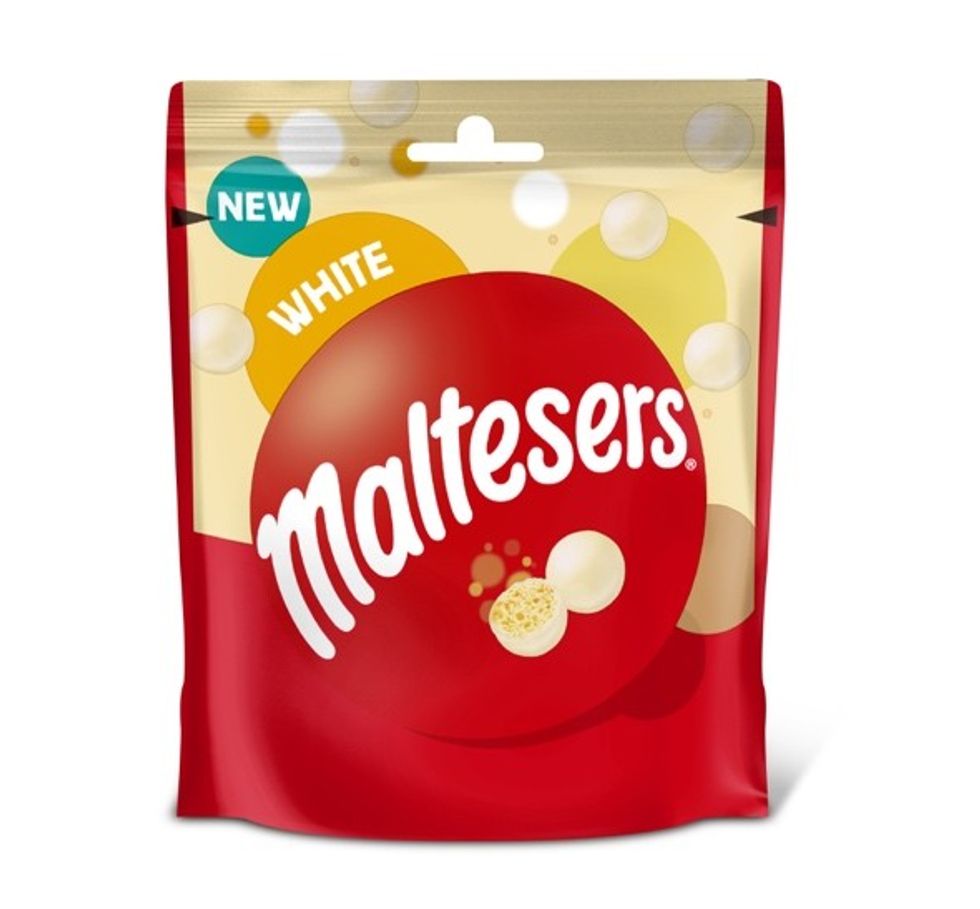
Mars Wrigley is capitalising on consumer nostalgia with the return of Maltesers White Chocolate after more than a decade. Clare Moulder, Maltesers senior brand manager, confirms: “Consumers absolutely love Maltesers white chocolate and have been clamouring for us to bring it back.” The timing aligns perfectly with market trends, as “white chocolate is a growing trend” with the sub-category seeing “a 12 per cent uplift in 2024.”
The relaunch strategy targets younger demographics, with Moulder noting that “white chocolate versions of favourite brands appeal to the under-35 demographic, so this launch is set to bring existing as well as new consumers to confectionery aisles.”
World of Sweets is driving innovation through the popular Barratt brand with an exciting range of candy flosses that reimagine classic flavours. Kathryn Hague, Head of Marketing, explains the unique approach: “All of the candy flosses are available in the classic Barratt flavourings, but have a unique twist to them.” The WHAM!® candy floss features “popping candy scattered throughout an iconic sour raspberry flavoured floss,” whilst Flumps includes “crunchy, dehydrated mallows hidden within a vanilla floss.”
The innovation extends beyond textures to pricing strategy, with WHAM! and Fruit Salad candy flosses available in 20g cups retailed at £1, and the Dib Dab and Flumps flosses can be bought in 50g tubs retailed at £2.
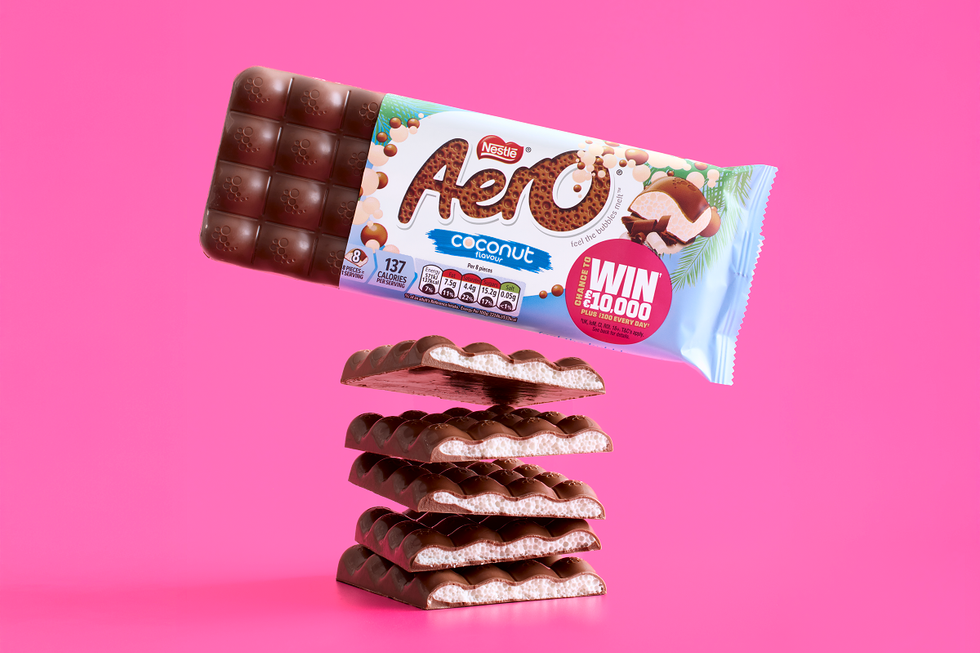
Nestlé's Aero Coconut sharing bar exemplifies how limited editions can generate excitement. Cat Mews, Brand Manager for Aero at Nestlé UK & Ireland, positions the launch strategically: “The new Aero Coconut sharing bar invites consumers to indulge in a delightful experience that celebrates the joy of sharing.” The 90g format targets the growing demand for sharing occasions, particularly during summer months.
Similarly, Skittles Citrus taps into seasonal trends with its “mix of five flavours: Orange, Lemon, Lime, Mandarin, and Blood Orange.” Florence McGivern, Skittles senior brand manager, emphasises the impulse opportunity: “With its zingy taste and vibrant mix of flavours, Skittles Citrus is designed to tap into the growing demand for fruity confectionery while driving impulse purchases, especially in the summer months when social snacking occasions peak.”
Gnaw's entry into the impulse fixture represents a significant trend towards premiumisation. With their new 35g impulse bars featuring “Popcorn & Peanut, Honeycomb & Caramel, Sticky Toffee Pudding and Seville Orange,” the brand targets retailers seeking differentiation. Josh Patterson, Gnaw spokesperson, notes: “We're fortunate that our long-standing commitment to create new flavours in chocolate has tallied with many retailers' ambitions to trade up and differentiate their impulse treat fixtures.”
At £1.75 retail, Gnaw positions itself as offering “small moments of joy” propositions for consumers seeking premium experiences within convenience retail.
Swizzels demonstrates how brands can innovate whilst addressing health trends. Their new Squashies Tropical and Squashies Sour Shooting Stars are “HFSS-compliant, for shoppers seeking a treat that is lower in sugar but doesn't compromise on taste.” Clare Newton, Trade & Shopper Marketing Manager, explains: “Reflecting consumer trends, including the rising popularity of sour and tropical flavours, Squashies Tropical and Squashies Sour Shooting Stars retain the unique soft and foamy texture and beloved taste of Squashies whilst appealing to those seeking a HFSS-compliant choice.”

Mars Wrigley's Snickers “Off Your Game” campaign demonstrates the power of sports marketing in confectionery. Steve Waters, Snickers Senior Brand Manager, highlights the category opportunity: “We know that the confectionery category experiences a 20 per cent uplift during major tournament with 75 per cent of sports fans snacking whilst watching game. This presents a great opportunity for retailers to drive profits.”
The campaign, backed by £1.5m media investment, spans across all Mars Wrigley bar brands (including Snickers, Mars, Twix and Bounty), offering retailers “significant opportunities to drive impulse purchases and category growth.”
Werther's Original's comprehensive rebrand, unveiled last month, represents the largest update in the brand's 121-year history. Andy Mutton, Managing Director at Storck UK, positions the refresh strategically: “The rebrand comes at a time of strong growth within the sugar category, enabling retailers to capitalise on consumer demand for variety, convenience and sugar-free alternatives.”
With 96 per cent brand awareness and worth £36 million in the UK, the refresh aims to “inject new energy into the brand while enhancing its shelf standout” whilst maintaining the brand's heritage appeal.
Differentiation through exclusivity
Success in the confectionery category extends beyond product selection to strategic merchandising and positioning that leverages convenience stores' unique strengths against larger competitors. Independent retailers can differentiate themselves by focusing on exclusivity, purposeful merchandising, and creating compelling in-store experiences.
The key to competing with supermarkets lies in offering products consumers cannot easily find elsewhere. Stubbins emphasises that “by giving shelf space to brands that consumers might not find in their local supermarket, independents can win in the category.” This approach requires “identifying brands that meet current consumer demands and ensuring these receive prominent shelf placement.”
Purpose-driven brands offer particular opportunities for differentiation. Divine Chocolate exemplifies this with their comprehensive ethical positioning: “For the last 25 years, we've been purchasing all the ingredients that make Divine Chocolate on Fairtrade terms, which includes a Fairtrade Premium, which farmers and co-operative owners decide how to spend.” The brand's commitment extends to profit-sharing, with “farmers and co-owners also benefit from 20 per cent of Divine's profits too,” addressing the reality that “the average cocoa farmer earns only six per cent of the total price of a chocolate bar.”
Stubbins advises that “retailers can build a credible range by looking to brands with purpose-led or sustainability messaging, that go beyond just a nod to sustainability,” ensuring authenticity that resonates with increasingly conscious consumers whilst maintaining product excellence.
Effective merchandising goes beyond traditional category placement. Hassett advocates for “innovative merchandising strategies that disrupt shopper journeys and encourage impulse purchases.” The data supporting strategic placement is compelling: eye-level shelves generate 35 per cent more sales compared to lower or higher shelves [Nielsen Shopper Behaviour Research], whilst 16 per cent of unplanned purchases are driven by in-store advertising and display [POPAI Research].
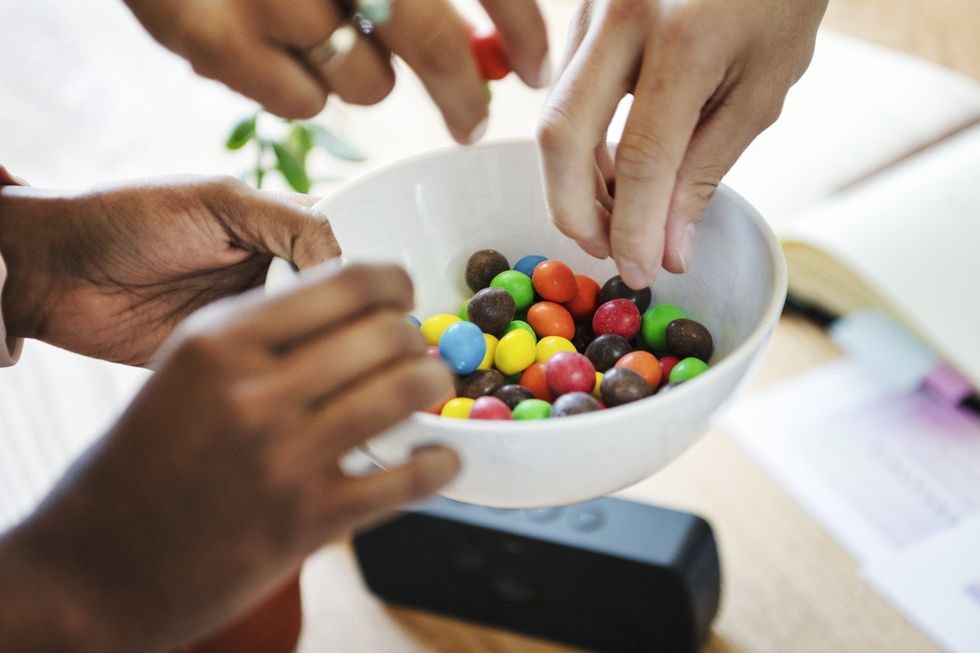
Cross-category merchandising presents significant opportunities, particularly with licensed products that can create “cross-category touchpoints that reinforce brand awareness and contribute to increased sales,” Hassett notes. The impact of presentation quality cannot be understated, with “62 per cent of shoppers making impulse buys when attracted to an eye-catching presentation.”
Hague advises retailers to create dedicated novelty displays in stores that are stocked with exciting novelty lines and that highlight the low price points. “Novelty sweets carry a high perceived value, making them excellent sales drivers for pocket money spenders. Place the displays in high-traffic spots in the store, such as near the tills or at aisle ends to encourage impulse buys,” she adds.
Recognition of retailers' time constraints has led to comprehensive support systems. Nash highlights their retailer website, www.SnackDisplay.com, which has category tutorials that are “perfect for new starters who would like to get to grips with their ranges, and category display pages for any staff who have designated areas of the store to look after.” These resources include practical tools such as a quick reference best-seller list, re-sharable social media content, and a profit calculator.
For convenience retailers, the strategy is clear: embrace the premiumisation trend whilst maintaining accessibility. Success requires balancing traditional impulse purchasing with new consumption occasions, maintaining strong brand representation whilst offering value, and expanding categories to include health-conscious, vegan, and licensed alternatives. The key lies in understanding that modern consumers seek treating experiences that align with their values, budgets, and lifestyles, creating opportunities for retailers who can curate ranges that deliver on these multifaceted demands.
And, the category's impulsive nature remains one of its greatest strengths, making strategic placement and visual merchandising crucial for maximising sales. With Christmas approaching and the school holidays providing additional opportunities, the chocolate and confectionery category offers independent retailers a sweet path to sustained profitability in challenging times.

